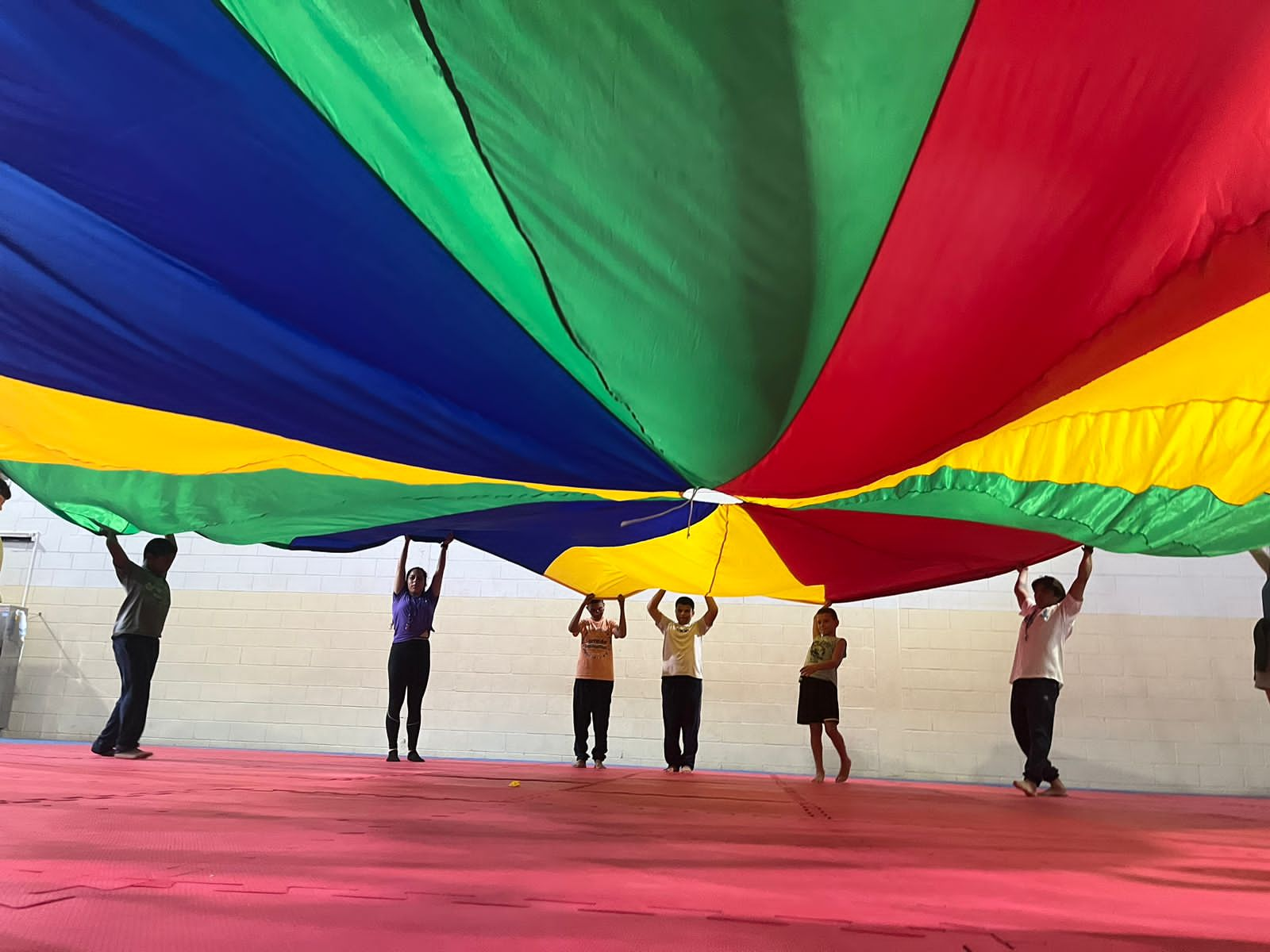

Primarily characterized by difficulties with reading and writing, individuals with dyslexia may also experience motor problems such as difficulties with postural control, locomotion, and activities requiring hand-eye coordination, something recent studies suggest might be related to a slight impairment of the cerebellum (photo: Projeto Dislé)
A pilot intervention project involving playful activities that engaged motor skills and cognition showed promising results in improving eye movements and reading speed in eleven children with dyslexia.
A pilot intervention project involving playful activities that engaged motor skills and cognition showed promising results in improving eye movements and reading speed in eleven children with dyslexia.

Primarily characterized by difficulties with reading and writing, individuals with dyslexia may also experience motor problems such as difficulties with postural control, locomotion, and activities requiring hand-eye coordination, something recent studies suggest might be related to a slight impairment of the cerebellum (photo: Projeto Dislé)
By Maria Fernanda Ziegler | Agência FAPESP – After following a protocol of sensory-motor activities with cognitive engagement for two months, eleven children aged 10 to 12 who were diagnosed with dyslexia showed improvement in reading speed. This initiative combined recreational activities that incorporated motor and social skills, demonstrating promise in improving children’s reading performance. The results of the study were published in the journal Applied Neuropsychology: Child.
“Although this is a study involving a small number of children, the results indicate that motor and cognitive challenges can contribute to better reading performance associated with changes in eye movements,” says José Angelo Barela, a professor at the Institute of Biosciences at São Paulo State University (IB-UNESP) in Rio Claro, Brazil. Barela is the coordinator of the project, in partnership with the Multidisciplinary Center for the Development of Assistive Technology (MCDAT), one of the Science Centers for Development (SCDs) supported by FAPESP.
“In addition to reducing reading time, we observed improvements in the children’s self-esteem, attention, and well-being,” says Barela. “To the point that teachers asked the children’s parents what had changed in their routine and treatment since they were more attentive and interested in class and performing better. The results were so promising that we’re going to develop a broader program in partnership with the Rio Claro city government to support more children for a longer period of time. This will also make it possible to improve the intervention protocol,” he says.
Dyslexia is a learning disorder that affects people without cognitive deficits, and its causes are still unknown. It is primarily characterized by difficulties with reading and writing, though individuals with dyslexia may also experience motor problems such as difficulties with postural control, locomotion, and activities requiring hand-eye coordination.
“Children with dyslexia need to fix their gaze on words for longer to understand the text, which is why they read more slowly,” explains Barela.
The researcher points out that reading involves identifying letters and words, specific eye movements, and cognitive processes to understand the content.
“Recent studies suggest that these difficulties in people with dyslexia may be related to a slight impairment of the cerebellum [the region of the brain responsible for motor coordination, balance, and posture], affecting sensory integration and motor performance. Therefore, in our work, we propose interventions that have an effect on this brain region and on eye movement,” he says.
The partnership with the Rio Claro city government will allow the researchers to test more assertive interventions and deepen their understanding of the mechanisms that led to improvements in the children’s reading time, self-esteem, attention, and well-being.
Interestingly, the intervention carried out during the pilot project had no significant effect on manual agility or coordination. “We assume that this factor may be related to the lack of specificity in motor skills training,” says Barela.
For now, the researchers believe the results may indicate greater activation of the cerebral cortex, which controls higher cognitive functions, such as language, thinking, and memory. “Greater activation of the cerebral cortex likely led to improved attention and, consequently, triggered other benefits such as reading speed, even with a short-term protocol of only two months with 60-minute sessions twice a week,” says the researcher. Regarding self-esteem and well-being, the researchers assume that these are a result of the benefits gained from reading time. “It seems that they themselves noticed the improvement.”
Barela points out that dyslexia is often not diagnosed until after the age of ten, by which time children have already passed the crucial stage for developing reading fluency and motor skills. These accumulated difficulties make the learning process even more challenging over time.
The article “The impact of sensorimotor with cognitive engagement training on reading and eye movement in developmental dyslexia” can be read at: www.tandfonline.com/doi/full/10.1080/21622965.2025.2484765.
Republish
The Agency FAPESP licenses news via Creative Commons (CC-BY-NC-ND) so that they can be republished free of charge and in a simple way by other digital or printed vehicles. Agência FAPESP must be credited as the source of the content being republished and the name of the reporter (if any) must be attributed. Using the HMTL button below allows compliance with these rules, detailed in Digital Republishing Policy FAPESP.





